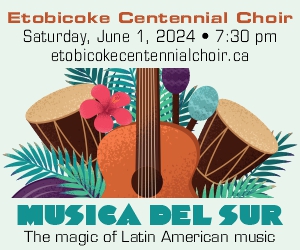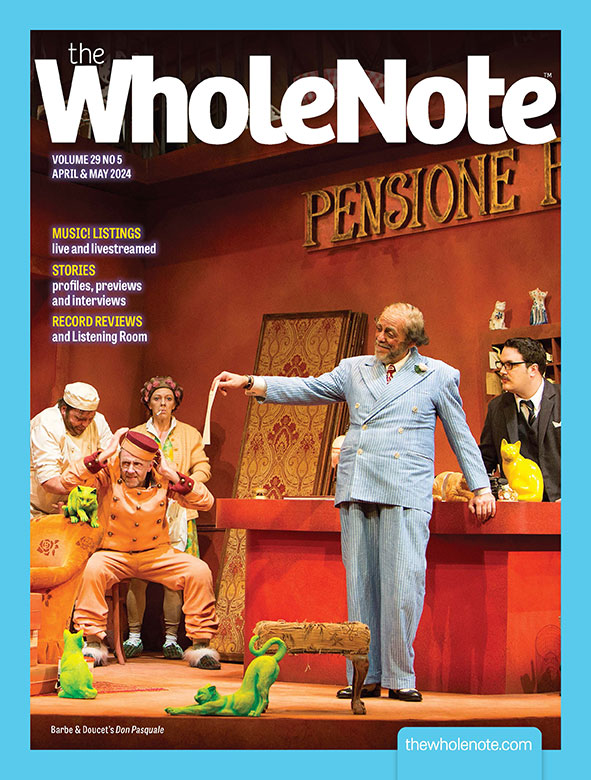I went last week (March 17 and 19) to two musical events which neatly (and entirely coincidentally) balanced events 100 years apart around a central pivotal point of reference.
The first was a panel discussion/chamber concert involving players from the Vienna Philharmonic Orchestra organized by the Chumir Foundation for Ethics in Leadership at Glenn Gould Studio. Bruce Surtees briefly describes the event on page 14 of the current issue of the magazine.
The second was the appearance of the Los Angeles Philharmonic at Roy Thomson Hall on Wednesday March 19, which is described in some detail by Paul Ennis in his Classical & Beyond column which commences on page 17.
In the case of the Glenn Gould Studio Chumir-sponsored event, the 100-year interval was that between the start of the so-called “War to End All Wars” in 1914 and today. 1914 and 2014 stand like two grim pillars on either side of the event that was the main reason for the Chumir event taking place, namely the Vienna Philharmonic Orchestra’s efforts, since 1998, to begin coming to terms with an inglorious chapter in its storied 156 year history, between 1938 and 1945. That a majority of Austrians (57 percent) today accept that Austria was at least as complicit in the Anschluss as a victim of it is a welcome development. That in the same poll only 24 percent agree with mosques being built in Austria is a grim reminder that memory and selective amnesia are partners in a very grim dance.
We will have lots more to say about that event in the coming weeks, as Surtees explains.
In the case of the Los Angeles Philharmonic Orchestra’s Roy Thomson Hall appearance, the 100-year interval is a much more benign one, simply between the dates of composition of the two symphonies that made up the two halves of the program: John Corigliano’s Symphony No.1 composed in 1988, and Tchaikovsky’s Symphony No.5, composed exactly 100 years earlier. And in this case the link between the two is not a moment of monumental infamy, but an entirely happy one, namely the triumphant return to Toronto of Gustavo Dudamel, last here in October 2009 with Venezuela’s Simon Bolivar Youth Orchestra, as it was then known, on the occasion of Jose Antonio Abreu being awarded the Glenn Gould Prize.
About this event I have a little more to say right now, because of the little affirmations that the concert sent ringing to the rafters of my mind as resoundingly as the LA Phil under Dudamel sent the music singing through the not always forgiving whole of RTH.
For me the event was not just about the music; rather it was not just about the sounds of the music but also about music’s power to bring things into being.
How many people in RTH that evening knew, for example, that in the near-capacity crowd were a couple of hundred students of Sistema Toronto, which traces its origins to Abreu’s visit in 2009. Sistema Toronto, as some of you may recall was chosen by Glenn Gould prize laureate Leonard Cohen for the City of Toronto Protégé prize, two years after Abreu’s award. Now here they were, full of hope and music, bringing their own passion for music to a gala banquet before the concert, affirming the fact that Abreu’s vision, powered by the state in his native Venezuela, could take root and flower in the soil of Ontario, where culture tends to be privatized and parcelled out as grimly territorially as the shores of most lakes in cottage country.
And I wonder how many people at RTH felt the same little bump of pleasure as I did, reading in the program that the Los Angeles Philharmonic is now the driving force behind something called YOLA (Youth Orchestras of Los Angeles), bringing music’s motive power to over 600 youth in underserved L.A. neighbourhoods. Yet another sign of Sistema’s spread, one can say, having taken root since Dudamel arrived.
Change for the better all sounds so simple when it’s spelled out that way. There’s another example in the issue – the “Hamilton Plan” that Chuck Daellenbach described to me in our interview (page 14), that brought music to the schools of Hamilton and its surrounds in the late 60s and early 70s with what sounds in the telling like astonishing ease.
It’s tempting to think of the nascent power for usefulness of The WholeNote’s “Orange Pages” initiative as Allan Pulker describes it on page 61 as spreading with the same ease. Just think how easily it would all come to pass if “I told two friends, and they told two friends and they told two friends,” the way it did in the shampoo commercials back in the same wonderful 70s that Daellenbach talks about in our interview.
Enjoy this issue in all its diversity, dear readers. Music might not have had the power to dispel this winter’s polar vortex, but it continues to offer the hope of spring.
publisher@thewholenote.com




